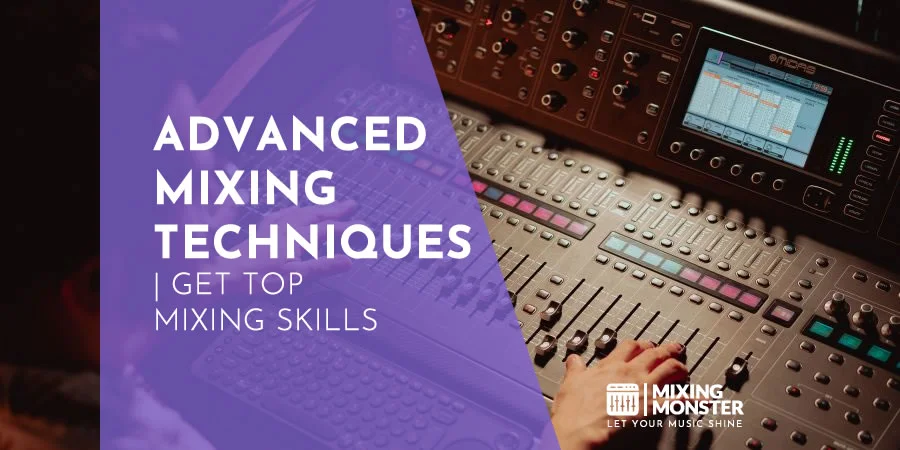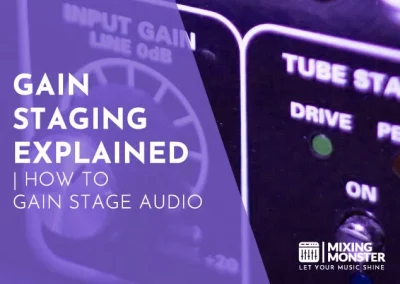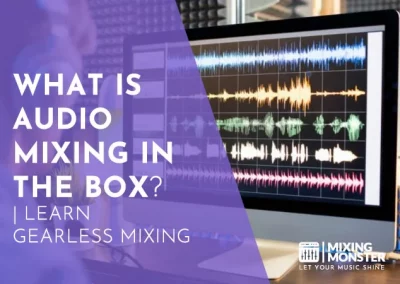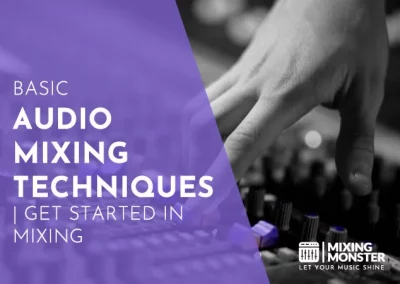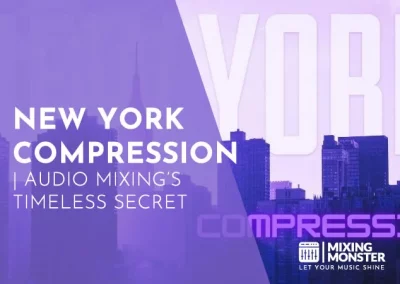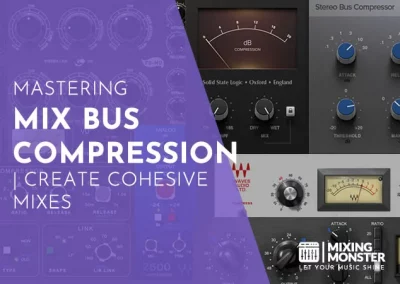Home > Blog > Mixing > Mixing Techniques
Disclosure: Some of the links below are affiliate links, meaning that at no additional cost to you, we will receive a commission if you click through and make a purchase. Read our full affiliate disclosure here.
Advanced mixing is more than just setting levels and panning instruments; it’s an intricate art that transforms raw recordings into a sonically pleasing experience. When you dive into advanced mixing techniques, you want clarity, balance, and an emotional impact that leaves a lasting impression on the listener.
Advanced mixing techniques encompass a broad range of skills and tools that can significantly enhance the sonic quality of music. Essential elements include an in-depth understanding of EQ to clarify and define each instrument in the mix, the nuanced use of compression to control dynamics and add punch, and the creative application of effects to create space and depth within a track.
Imagine bringing your music to life in a way that resonates with your audience, making each moment count. By further exploring advanced mixing, you’ll gain insights into creating powerful, clear, cohesive mixes that stand out in today’s diverse music landscape. With a better understanding of the depth and breadth of mixing techniques, you can elevate your mixes to professional standards, ensuring they sound great on any system and connect deeply with your listeners.
KEY TAKEAWAYS:
- Advanced mixing enhances musical clarity, balance, and emotional impact.
- A range of techniques, from EQ to automation, shapes a professional-sounding mix.
- Understanding advanced mixing is key to creating sonically rich and impactful music.
Table Of Contents
1. The Foundation Of Advanced Mixing
2. Advanced EQ Techniques In Mixing
3. Compression Mastery In Mixing
4. Creative Use Of Effects In Mixing
5. Automation For Dynamic Mixes
6. Mixing In The Box Vs. Analog Summing
7. Spatial Mixing And 3D Audio
8. Mixing For Different Delivery Formats
9. Advanced Vocal Mixing Techniques
10. The Art Of Mixing Low End
11. The Role Of Mastering In The Mixing Process
12. Wrapping Up Advanced Audio Mixing
13. FAQ

1. The Foundation Of Advanced Mixing
Advanced mixing builds on a robust base of core principles and techniques. You need to refine your fundamental skills, as they serve as the groundwork for implementing more sophisticated strategies in mixing.
Recap Of Essential Mixing Knowledge
Your journey to advanced mixing begins with a firm grip on the basics. These essentials are your mixing toolkit, from understanding levels and panning to compression and EQ. Here’s a brief overview:
| Knowledge Area | Description |
| Levels | Balancing the volume between tracks. |
| Panning | Positioning sounds in the stereo field. |
| EQ | Shaping the frequency content of each track. |
| Compression | Controlling dynamics and adding punch. |
| Reverb and Effects | Creating space and depth in the mix. |
| Audio Editing | Cleaning and tightening up audio tracks. |
Honing these skills ensures you are ready to tackle advanced mixing with confidence.
Understanding Audio Spectrum And Psychoacoustics
As you dive deeper, you must comprehend the audio spectrum and psychoacoustics, crucial in defining the aural landscape. Understanding how different frequencies interact within a mix and how the human ear perceives them enables you to sculpt a well-balanced and harmonious output.
Audio interfaces and monitoring hardware are quintessential in relaying the authentic sound of your mix, while mixing software unlocks a suite of advanced tools for precision work. Your skill in utilizing these tools to interpret and manipulate sound will elevate your mixing to a professional level.
2. Advanced EQ Techniques In Mixing
Effective use of EQ is critical for achieving a clean and balanced mix. These advanced techniques will help you sculpt tracks in detail, enhance the stereo field, and control frequencies dynamically.
Surgical EQ For Cleaning Up Tracks
Your mix can benefit from the precision of surgical EQ. Use narrow Q (quality factor) settings to attenuate troublesome frequencies that muddy your sound. Removing unwanted resonances or rumble can bring much-needed mix clarity to individual tracks.
Mid/Side EQ For Spatial Enhancements
Mid/side EQ offers control over the stereo component of your mix. Applying EQ to just the middle or sides allows you to widen the stereo image or bring focus to the center. This leads to a balanced frequency response, enhancing the stereo imaging of your mix.
Dynamic EQ For Frequency-Specific Compression
Dynamic EQ is a hybrid of EQ and compression, allowing you to apply gain change to specific frequencies only when they exceed a threshold. It’s effective for taming resonances or frequency-specific balance control without affecting the source material’s overall tonality. Use it subtly to maintain low-end tightness and clarity across the frequency spectrum.
3. Compression Mastery In Mixing
Mastering compression in your mixing process ensures you maintain control over the dynamics of each track, allowing for a balanced and professional sound. Compression techniques can bring a mix to life, adding punch and clarity to your tracks.
Multiband Compression For Dynamic Control
Multiband compression is an essential tool for managing different frequency ranges individually. By splitting the audio spectrum into several bands, you can apply dynamic processing only where needed, such as tightening the bass without affecting the clarity of the high end. This precision helps maintain the natural character of your recording while still controlling problematic frequencies.
Parallel Compression For Added Punch And Dynamics
Parallel compression, sometimes called ‘New York compression,‘ is blending an uncompressed signal with a heavily compressed version of the same signal. This simultaneously gives your tracks the strength of compression and the natural dynamics.
To implement this, you should set up an auxiliary track with high compression and mix it with your original track until you achieve the desired punchiness.
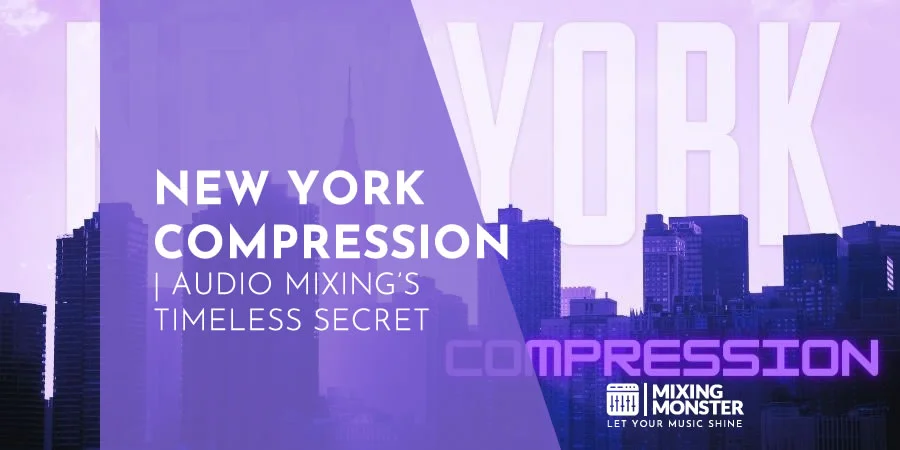
Sidechain Compression Techniques For Modern Sound Sculpting
Sidechain compression allows you to shape the space where different mixed elements sit dynamically. By compressing a track based on the level of another (often the kick drum compressing the bass line), you create a rhythmic pulsing effect that enhances the groove of the mix.
It’s a staple in electronic music for creating that signature ‘pumping’ sound, but it can also be used subtly in any genre to ensure that your most important tracks cut through the mix at the right times.
4. Creative Use Of Effects In Mixing
Applying effects creatively can transform a mix, giving it depth, movement, and character. By mastering specific techniques, you can enhance the listening experience significantly.
Advanced Reverb Techniques For Depth And Space
Reverb is crucial for adding depth and creating an acoustic space around your sounds. Use pre-delay to separate the source from the reverb tail, clarifying the original signal while maintaining a sense of space. Experiment with different reverb types—such as plate, hall, or spring—to find the perfect match for the mood you’re trying to set.

Delay Throws And Automated Panning For Movement
Strategic use of delay can inject dynamic movement into your mix. Throwing a delay on key phrases or hits adds a sense of unpredictability and excitement. Combine this with automated panning to move the delayed signal across the stereo field, giving the impression of a more expansive soundstage.
Saturation And Harmonic Excitement For Warmth And Presence
Saturation adds warmth and presence to a mix by introducing subtle harmonics. Gently apply analog emulation plugins to emulate the richness of tape or tube hardware. By carefully adjusting the amount of saturation, you’ll achieve a fuller sound without compromising the mix’s integrity.

5. Automation For Dynamic Mixes
The strategic use of automation can transform a good mix into a captivating sonic journey. By manipulating volume, panning, and other parameters over time, you give your tracks a life they wouldn’t have otherwise.
Using Automation To Add Life And Interest To Static Tracks
When your tracks feel too static, consider using automation. In DAWs like Logic Pro X or Ableton Live, you can liven up a tedious rhythm guitar or a monotonous synth pad. For example, subtle volume swells can create a sense of breathing, rhythmically drawing listeners in for a more engaging experience.
Implement panning automation to add movement across the stereo field. This technique can make a flat mix sound more expansive. It’s as if the music dynamically interacts with the listener, weaving around in three-dimensional space rather than just sitting statically between the speakers.
Automating EQ, Effects, And Dynamics For Evolving Textures
Automating EQ settings can change the tonal balance of an instrument throughout a song. For instance, you might begin with a muffled kick drum sound in the intro by reducing the high frequencies and then gradually increasing them using automation to add clarity as the track progresses.
Automation of effects like reverb and delay can dramatically alter the atmosphere during different parts of a track. Automating the mix control on a reverb might take a vocal from up-close to ethereal from verse to chorus. Routing individual tracks to effects busses in Pro Tools allows for more intricate automation possibilities, creating evolving textures that captivate the listener.
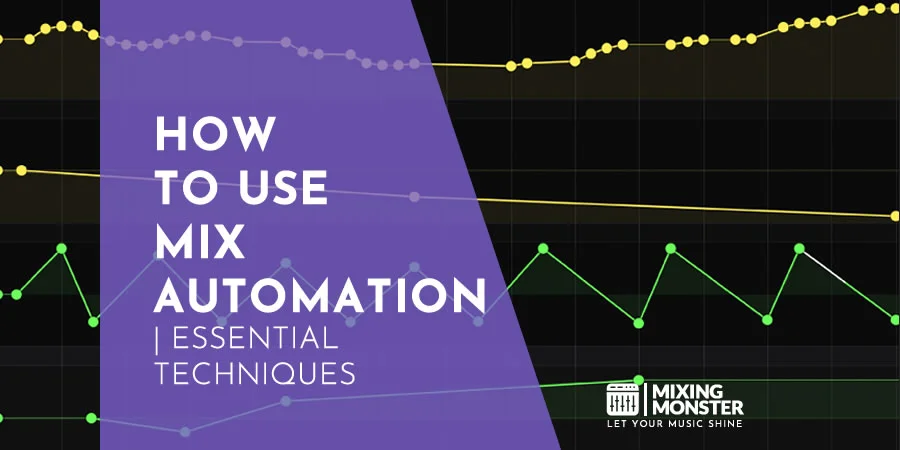
6. Mixing In The Box Vs. Analog Summing
Deciding between mixing in the box and analog summing can impact the sonic quality of your final mix. Your choice should factor in the benefits of advanced digital technology and the distinctive warmth offered by analog summing.
The Benefits Of Digital Mixing With Today's Technology
You can access a vast array of tools and flexibility when mixing digitally. Advancements in digital technology allow for precise editing and automation, enabling consistent results across sessions. Implementing analog emulation plugins gives you the color and character of an analog console, enhancing your mix with the convenience of digital recall.
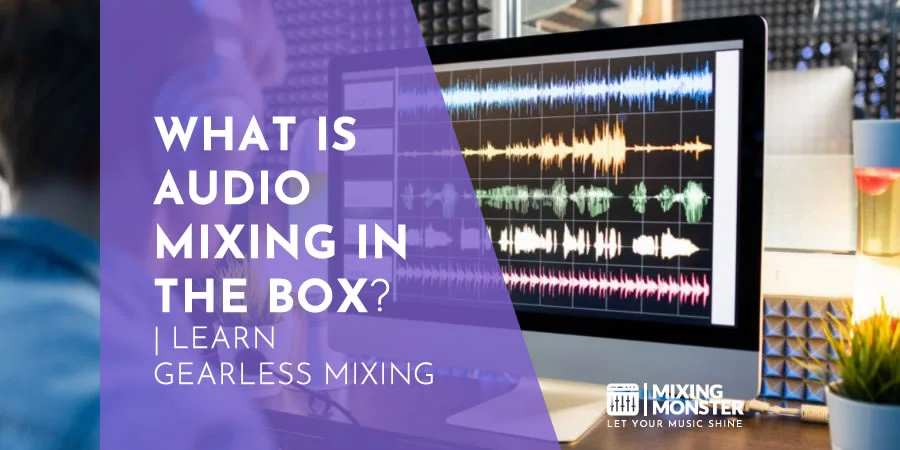
When And How To Use Analog Summing
While digital mixing offers precision, analog summing can enrich your mix with added depth and warmth. Consider integrating analog summing when you seek to imbue your mix with the dimensional qualities of outboard gear. It’s crucial to manage signal levels and routing correctly to maximize the benefits of your summing box or console and avoid artifacts that can compromise your audio’s integrity.
7. Spatial Mixing And 3D Audio
Spatial mixing and 3D audio stand at the forefront of creating immersive listening experiences in audio production. By manipulating sound elements in three-dimensional space, you can craft mixes that envelop listeners, putting them at the center of the sonic environment.
Techniques For Creating Immersive 3D Audio Mixes
Imaging and balance are pivotal in 3D audio mixing. To create realistic spatial effects, you must carefully place sounds in the stereo field through panning. This involves adjusting the left and right channel levels to position a sound source within a virtual sphere around the listener. You’ll also use reverbs to simulate spaces, which add depth and dimension to your mix.
- Panning:
Distribute sound across the stereo field to simulate a listener’s real-world experience. - Balance:
Maintain an even audio distribution to ensure clarity and prevent disorientation. - Reverbs:
Utilize different types to recreate the acoustics of physical spaces.
Understanding Binaural Mixing And Ambisonics
With binaural mixing, you create a two-ear audio experience, mimicking how humans naturally perceive sound. Using head-related transfer functions (HRTFs), you simulate how sounds reach the ears from various directions, which is essential for headphone listening.
Ambisonics, on the other hand, is a full-sphere surround sound format:
- First-Order Ambisonics:
Captures sound from all directions using a tetrahedral microphone array. - Higher-Order Ambisonics:
Adds more microphones for increased spatial resolution.
Your mixes can achieve an expansive and highly engaging auditory experience through these advanced techniques.
8. Mixing For Different Delivery Formats
When preparing audio for release, you must consider how your mix will translate across various delivery formats. Differences in playback systems, from earbuds to home theater setups, require tailored approaches to ensure audio quality remains consistent and authentic to your artistic intent.
Optimizing Mixes For Streaming Services
Your mix must maintain clarity and integrity when compressed for streaming platforms. Services like Spotify and Apple Music use data compression algorithms, which can affect your mix’s audio quality. To counteract this, apply limiting carefully to avoid digital distortion caused by excessive loudness or peak levels. Ensure your mix has the following:
- Headroom:
Aim for -1.0 dB true peak limit to accommodate codec transients. - Dynamic Range:
Don’t over-compress; preserve the dynamics to keep the audio quality intact even after encoding.
Understanding Loudness Standards And Metering
Different platforms and broadcasters adhere to distinct loudness standards. You must understand and implement these standards to ensure your mix translates well on all delivery formats. Use loudness meters to measure your mix’s integrated loudness, usually calibrated to international standards like ITU-R BS.1770. Keep in mind:
- Loudness Normalization:
Streaming services normalize audio to specific LUFS targets. Stay within their guidelines to prevent negative alterations to your mix. - True Peak Metering:
Employ true peak meters to check peak levels and guarantee that your limiting effectively prevents distortion after encoding.
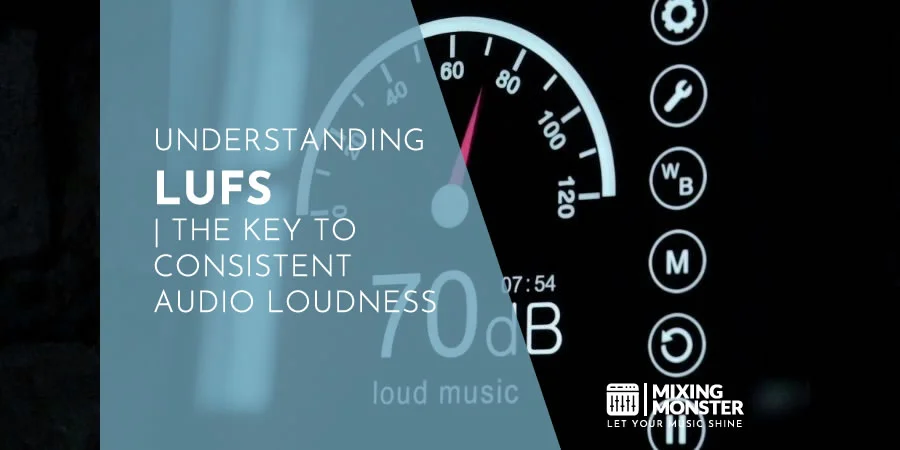
9. Advanced Vocal Mixing Techniques
In advanced vocal mixing, you’ll utilize techniques that enhance the lead vocals and create a fuller sound. You’ll work with layering and specific processing approaches for backing vocals and employ precise pitch correction to achieve a polished and professional sound.
Layering And Processing Backing Vocals
When processing backing vocals, you aim to complement and support the lead vocal without overshadowing it. Start by panning background vocals to create space and apply EQ to cut low frequencies, preventing muddiness.
Using compression, ensure the levels are consistent, and subtly apply reverb or delay to add depth. For a richer texture, duplicate layers and pan them to different positions in the stereo field, and consider using different types of reverb for each layer to create a complex and intriguing sound.
Advanced Pitch Correction And Vocal Tuning Techniques
Pitch correction is essential to refine the vocal performance. First, analyze your vocal tracks, focusing on intonation and timing. Use a pitch correction tool to correct slight pitch deviations manually; this lets you maintain the natural nuances of the vocalist’s performance.
Avoid over-tuning, which can result in an artificial ‘T-Pain effect.’ For transparent correction, adjust only the noticeably off-pitch notes. Automate pitch correction settings to address specific vocal sections rather than apply a blanket correction.

10. The Art Of Mixing Low End
Mastering the low end in your mix is essential for achieving a deep and impactful sound. It’s crucial to understand that while bass frequencies are felt more than heard, they play a foundational role in modern music production.
Techniques For Achieving A Clear And Powerful Bass
Balance in the low end starts with proper gain staging to ensure that each element sits nicely in the mix without overpowering the others. Utilize a low pass filter to retain the essential bass frequencies and remove unnecessary high-end noise that can cloud your mix. Here are the steps to take:
- Listen Critically:
Train your ears to identify the nuances in different bass sounds. - Apply Filtering:
Roll off the low end at around 30Hz with a gentle slope to remove inaudible rumble and clean up the mix. - Control Dynamics:
Use compression to even out the level of your bass, making it present and consistent without peaking.
Balancing Kick And Bass For A Cohesive Mix
Your kick and bass must work together harmoniously. A well-defined relationship between these elements is the bedrock of a powerful low-end.
- EQ Techniques:
Carve out space for each by notching the kick’s dominant frequency in the bass EQ and vice versa. - Sidechain Compression:
This tool can help the bass dance around the kick, allowing each element its moment in the spotlight while avoiding frequency masking. - Phase Alignment:
Pay keen attention to the phase relationship between the kick and bass to prevent cancellations that weaken the low end.
11. The Role Of Mastering In The Mixing Process
Mastering is the final step in the audio post-production process that ensures your mix translates well across all playback systems. It involves critical listening and precise adjustments to clarify and prepare the final mix for distribution.
Pre-Mastering Tips For A Better Final Master
Before handing off your mix to the mastering engineer, there are several things you can do to enhance the final master:
- Check your mix for excess low-frequency energy, which can muddy the clarity of your final product. Use high-pass filters judiciously to clean up any unnecessary rumble.
- Ensure that your mix has dynamic range; avoid over-compressing tracks, as it leaves less room for enhancement during mastering.
- Provide mastering engineers with versions of your mix with and without effects like reverb or delay on the master bus, as this can give them more flexibility.
Communication With Mastering Engineers For Optimal Results
Collaboration with your mastering engineer is crucial to achieve optimal results. When you communicate effectively, you help the mastering engineer understand the sound you’re aiming for.
Provide references of mastered tracks that represent your desired sonic qualities and articulate specific concerns you might have regarding the final mix. Also, discuss the formats you anticipate releasing your music on, which could influence the mastering process.
With this information, mastering engineers can tailor their approach to ensure the final master meets your expectations.
12. Wrapping Up Advanced Audio Mixing
As you reach the end of this journey, you’re equipped with a robust toolkit for enhancing your audio mixes. Now, let’s reflect on the key skills that have been vital throughout this process and remind you of the importance of continual learning in this ever-evolving field.
Recap Of Advanced Audio Mixing Skills
|
Skill |
Description |
|
Stem Mixing |
Integrate separate musical elements effectively using advanced stem mixing techniques. |
|
Dynamic Processing |
Apply compression and limiters to control the energy and consistency of your audio. |
|
Equalization |
Use EQ to shape the tonal balance and create space for each element within the mix. |
|
Effects Processing |
Incorporate reverb, delay, and modulation to add depth and character. |
|
Automation |
Implement movement and variation over time with plugin automation. |
|
Spatial Effects |
Create a three-dimensional soundscape with panning and stereo imaging tools. |
|
Parallel Processing |
Enhance dynamics and add texture using techniques like parallel distortion. |
Never Stop Learning In Audio Mixing
Your journey with audio mixing continues. As new technologies emerge and musical trends evolve, stay current with industry standards by seeking new knowledge and techniques.
Dedicate time to practice, listen critically, and never shy away from exploring innovative concepts that could elevate your mixes to new heights.
Remember, the landscape of audio mixing is constantly shifting, and to remain at the forefront, your learning should be continuous and your passion for the craft undiminished.
Happy mixing!
13. FAQ
1) What techniques do mixing engineers use to enhance the clarity of vocals in a track?
To improve vocal clarity, mixing engineers often employ equalization to remove unwanted frequencies, apply compression to even out the dynamic range, and use reverb or delay with moderation to create space without muddiness. Efficient use of these techniques can significantly enhance the presence and intelligibility of vocals in a mix.
2) How does the mastering process differ from mixing, and what are its specific goals?
Mastering is distinct from mixing; it involves final polishing the mixed tracks to ensure consistency across various playback systems and enhance the overall sonic quality. The mastering goals include:
- Adjusting the final sound level.
- Ensuring track-to-track uniformity.
- Preparing the music for distribution.
3) What are some examples of advanced mixing techniques that can improve the spatial quality of a mix?
Advanced mixing techniques like Mid/Side processing allow for separate manipulation of center and side content, enhancing the spatial depth. Automation of panning and effects can create dynamic movement, and careful arrangement of reverb sends can establish a sense of space in your mix.
4) What is the optimal range for mixing in audio levels to achieve a balanced sound?
Aiming for an average level of around -18dBFS during mixing strikes a balance between headroom and signal quality, which minimizes the risk of digital distortion while providing sufficient dynamic range.
5) Can you detail some of the critical steps involved in tracking before the mixing phase begins?
Before mixing, tracking involves:
- Capturing the best possible source sounds with careful mic placement.
- Selecting appropriate gear.
- Ensuring that each instrument is cleanly recorded at optimal levels without clipping or excess noise.
6) What resources, such as books or courses, can provide in-depth knowledge for advanced mixing and mastering?
We highly recommend our upcoming courses and ebooks on mixing and mastering. At the same time, courses such as Advanced Mixing With Grammy Nominee Marc Daniel Nelson can provide practical experience and an in-depth understanding of sophisticated mixing and mastering techniques.

